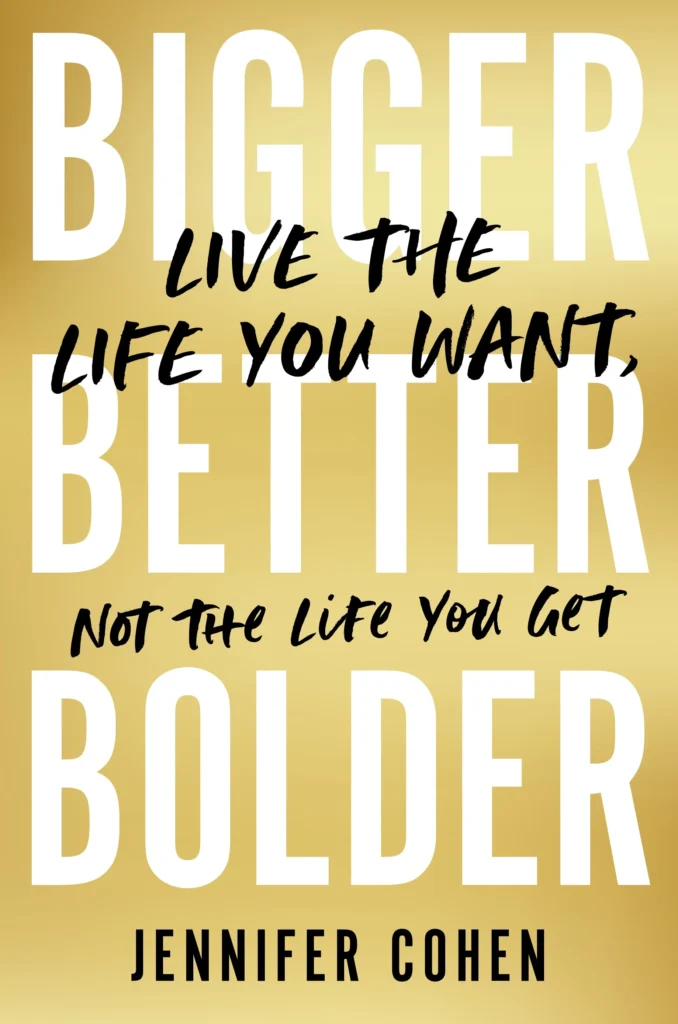
Cohen, a celebrity fitness trainer, author, podcaster and entrepreneur, shares how integrating simple habits can lead to significant improvements in health and performance
Jennifer Cohen stands out not just for her celebrity clientele but for her innovative approach to health and behavioral change. As an author, podcaster and entrepreneur, Cohen has made significant contributions to how the fitness industry thinks about habit formation.
Cohen’s journey from the music industry to becoming a fitness mogul illustrates her unique approach to leveraging personal strengths and industry knowledge to build successful businesses. Her strategies encourage fitness professionals to adopt creativity and bold thinking to transcend traditional career limits.
One concept, explored in her book, “Bigger Better Bolder: Live the Life You Want, Not the Life You Get,” revolves around “habit stacking”— layering new, beneficial habits atop existing ones. This approach simplifies integrating healthy behaviors into busy schedules, a common challenge.
On her podcast, “Habits & Hustle,” Cohen frequently discusses the scientific backing for these methods, underscoring the importance of consistency and patience in cultivating lasting habits.
Athletech News spoke to Cohen about how her insights and strategies can be utilized by fitness professionals to enhance their training programs and overall business strategies.
This conversation has been lightly edited for clarity and length

Athletech News: Your book “Bigger Better Bolder” introduces the concept of habit stacking. What is it, and how can personal trainers incorporate it into their clients’ routines?
Jennifer Cohen: Having habits and routines really helps people stay on point and be the most productive versions of themselves. What I call habit stacking is essentially training the neural pathways of your brain to expect and follow certain patterns that are healthy habits. These habits keep you on point, help you get things done, and uplevel everything you’re doing.
For example, exercise is a crucial habit. If you usually have a coffee at 7:00 AM and then head to the gym at 7:15 AM, this kind of autopilot pattern gets the hard things done early, training your brain for success.
ATN: Many trainers work with clients who have busy schedules and struggle to find time for exercise. How can habit stacking be tailored to fit into a client’s hectic lifestyle without overwhelming them?
JC: One way to build a new habit is to identify a current habit you’re already doing each day, and then stack the new behavior on top of it. For example, most of us brush our teeth every day. You can integrate a new behavior right after that. This method of stacking it upon a behavior you’re already doing is the best way to integrate any new habit.
It’s like piggybacking. So, if you know you’re going to brush your teeth, then add a different behavior right after. But it’s important not to overload yourself; never stack more than one new behavior at a time. Aim for one every 6 to 8 weeks, which is actually a relatively short period for habit formation.
ATN: Your podcast, “Habits & Hustle,” frequently explores the importance of structure and routine in achieving success. How do habits like incorporating meditation and exercise into daily routines contribute to overall fitness and wellbeing?
JC: What I’ve noticed from interviewing many successful individuals is that nobody stumbles upon success by accident. Structure is key to achieving true success. Part of this structure involves building out routines and habits.
For instance, meditation has become a prominent tool in recent years to help quiet the brain and enhance focus. Exercise, whether it involves sweating or just basic walking, also plays a crucial role. Walking is underrated yet so effective because it helps the brain function better during movement. A trend I’ve observed is the shift from sitting meetings to walking meetings, which not only changes the environment but also significantly boosts brain activity.
My book isn’t just about fitness. It’s about adopting a philosophy that everyone can strive towards, like the idea that not everyone can be skinny, but everyone can be strong. It’s about setting achievable goals that motivate and drive success. This book emphasizes the quality of boldness as essential for success, not just intelligence. Exercise plays a crucial role in this by changing neuroplasticity and reframing the brain.

ATN: How can personal trainers apply boldness to their careers?
JC: I started my career as a fitness professional, and I built a massive personal training business grounded in the concept of being bold. For instance, I transitioned from the music industry to personal training by leveraging my background. I initially approached a record label with a bold proposal: to train their talent for a month for free, with the potential for a permanent role.
This approach not only landed me the job but allowed me to expand to other labels and hire additional trainers. This story is a testament to thinking outside the box and using your unique background to create opportunities.
For fitness professionals looking to build their business, it’s crucial to be creative and think broadly about how your skills can be applied in new ways. Don’t be limited by traditional paths or the typical hourly wage model. Instead, look at your entire skill set, including aspects like sales and networking, which are vital in the fitness industry. Being likable and personable also plays a significant role. Don’t hesitate to step outside your comfort zone and pursue bold ideas that might seem unorthodox. This approach can lead to unprecedented success and growth.
ATN: For fitness professionals looking to adopt habit stacking, what are some common challenges they might face, and how can they overcome these obstacles to ensure their clients stick to routines?
JC: The biggest challenge with habit stacking, like with any new practice, is consistency. Many people aren’t patient enough to see results immediately and tend to give up too soon. The key is to encourage patience and give both yourself and your clients the grace to wait until changes start to occur in the brain’s neuroplasticity. Habit stacking involves creating a framework that integrates new habits with existing ones, making it easier for someone to stay consistent.
A common hurdle I hear about is time—many people think they don’t have enough of it. However, everyone has the same 24 hours in a day; it’s about prioritizing what’s important. My philosophy is clear: if you want something badly enough, you can make it happen, but you must be willing to put in the work. It’s not about achieving perfection immediately but about making progressive improvements. Even small increments of consistency, say doing something 30% more than before, can lead to significant benefits.
